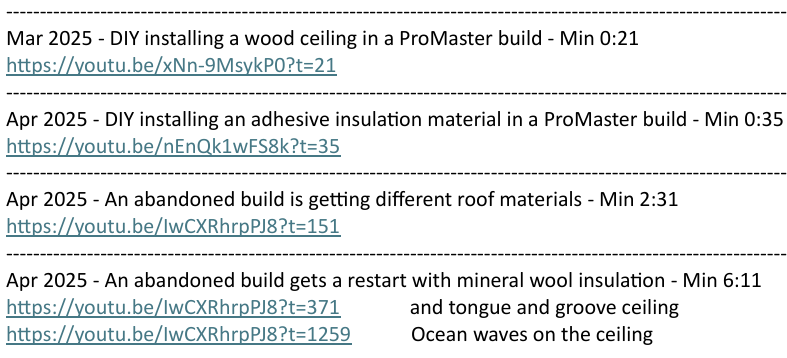Almost RV Perfect
Surface - Ceiling | $5.99 | eBook | 68 User Generated Video Clips | Click and Watch
Surface - Ceiling | $5.99 | eBook | 68 User Generated Video Clips | Click and Watch
Couldn't load pickup availability
eBook immediate DOWNLOAD - A year's research about what DIY builders are installing in their campervan build.
Research: What we found - Almost every DIY project includes insulating and covering the ceiling in the campervan. DIY builders attach thin firing strips, batons, or strapping to the ceiling rail supports. They attach the ceiling materials, covering the batons. Full insulation and ceiling attachment is a two or three-step process.
Something to consider. When attaching batons to the metal ceiling joist, it is important to attach them to the length of the ceiling rather than to the width of the ceiling. The length approach limits the number of connections touching the ceiling joist. Each connection is a thermal transfer point where the heat outside the van transfers through the strapping to the cooler living space inside the van. It is also suggested that a vapor barrier, often plastic sheeting, be installed over the insulation to keep condensation from forming inside the van space.
AI Overview: When converting a campervan, the ceiling material plays a crucial role in aesthetics, functionality, and comfort. It needs to be lightweight to preserve fuel efficiency and handling, durable against vibrations and temperature swings, easy to install (especially on curved van roofs), and compatible with insulation for thermal and acoustic performance. Budget, desired vibe (rustic, modern, or minimalist), and headroom preservation are also factors. Most builds start with insulation (e.g., foam boards or spray foam) and furring strips for mounting, then add the finish layer.
Share








